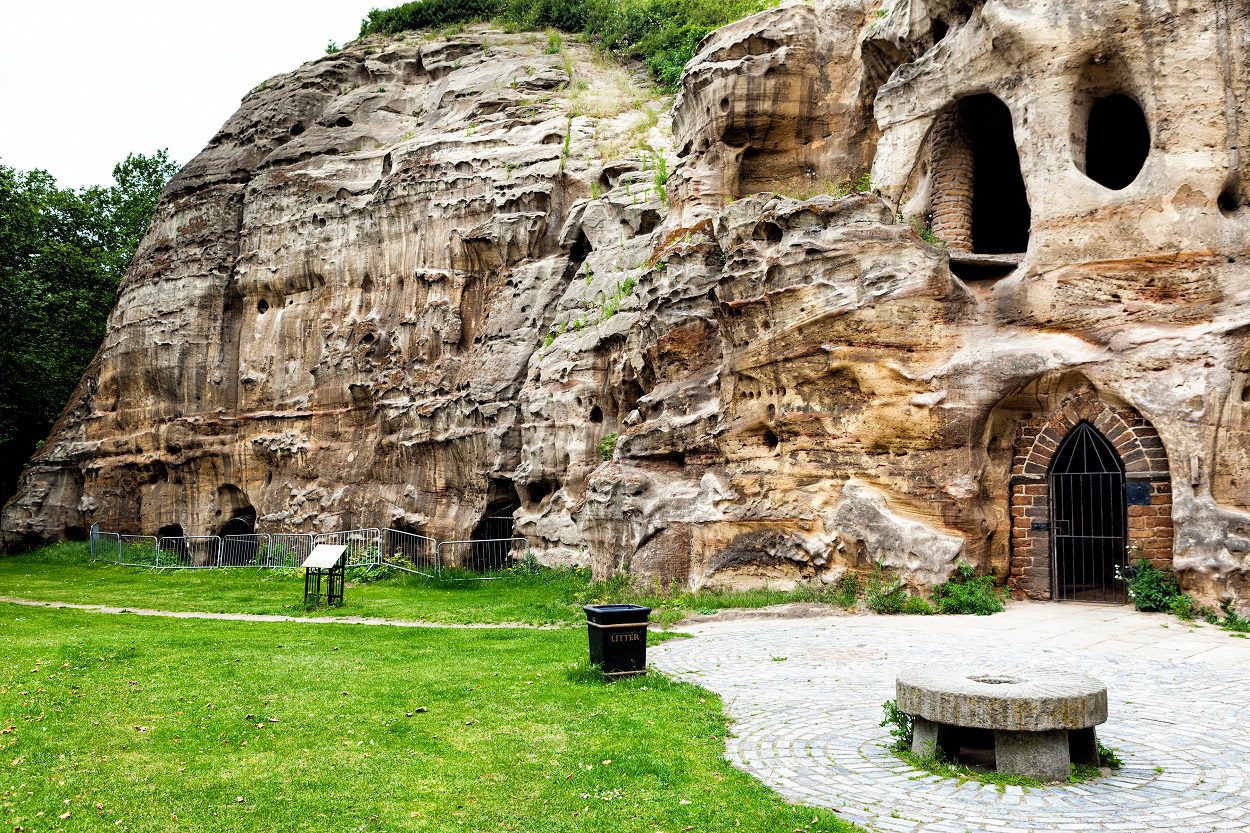Objects excavated in Nottingham’s historic caves will be unveiled to the public for the first time as part of a new exhibition at the University of Nottingham Museum.
Over the centuries, more than 800 man-made caves were dug in the soft sandstone beneath the streets of Nottingham, England.
The caves served a diverse range of purposes, from storage areas and cellars, to workshops for leather tanning and grain malting for brewing beer. Additionally, some were dug to be used as garden follies or exclusive drinking dens for the Nottingham elite.
The earliest caves date from the medieval period, described as Tigguo Cobauc (meaning “House of Caves”) in the Life of King Alfred, a biography written by Asher, a Welsh monk from St David’s who visited the area around AD 900.
Objects excavated by the Nottingham Historical and Archaeological Society, and from the collections of the University Museum, Nottingham City Museums and Galleries, and the National Justice Museum, will be presented as part of the new exhibition called “Fascinating Finds from Nottingham’s Caves”.
According to a press announcement by the University of Nottingham: “The objects on display include evidence for tanning leather and manufacturing objects from bone, as well as brewing beer, and a rare survival of a medieval ceramic ‘alembic’ or distilling apparatus.”
A notable highlight of the exhibition is a collection of decorative Venetian drinking glasses from the 17th century, which were discovered in a rock-cut well on the former site of the Castle Inn, now the location of Shire Hall.
Dr Chris King, Associate Professor in Archaeology at the University of Nottingham’s Department of Classics and Archaeology, said: “There is a long history of people excavating inside Nottingham’s caves, including both professional archaeologists and voluntary community groups – so it is wonderful to see this variety of fascinating objects brought together for the first time.”
“They range from humble clay pipes and storage jars to exotic imports like the Venetian goblets. Together these objects tell the story of the city and connect us to the multitude of people who once lived and laboured in and around the city’s underground spaces,” added Dr King.
Header Image Credit : Shutterstock







